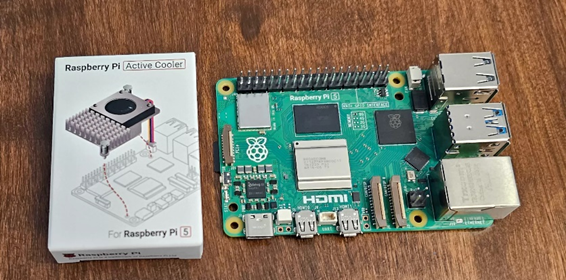CarderPlanet
Professional
- Messages
- 2,552
- Reaction score
- 728
- Points
- 113
Raspberry Pi 5 has made a leap in performance and optimization.
Phoronix specialists analyzed the performance of the new Raspberry Pi 5 microcomputer and noted a significant improvement over the previous Raspberry Pi 4 model, including an optimized I / O system.
The Raspberry Pi 5 is based on a Broadcom BCM2712 chip with a 2.4 GHz quad-core Arm Cortex-A76 processor, extensions for cryptography, a 512KB L2 cache for each core, and a 2MB shared L3 cache.
The computer is equipped with two USB 3.0 ports, two USB 2.0 ports, a Gigabit Ethernet port, two 4-channel MIPI transceivers, a PCIe 2.0 x1 interface via an M. 2 HAT adapter, 5V USB-C power, a standard 40-pin GPIO connector, and two micro HDMI outputs.

The Raspberry Pi 5 includes a dedicated Southbridge RP1 processor for improved I / O functions. The processor provides faster USB I / O, double the peak performance of the SD card, and improved connectivity with the PCI Express 2.0 interface.
The microcomputer is available in configurations with 4 GB and 8 GB of LPDDR4X-4267 SDRAM RAM, as well as Wi-Fi 802.11 ac, Bluetooth 5.0/BLE and a microSD card slot. A version with 16 GB of RAM has not yet been announced.
With a more powerful chip and an increased frequency of Cortex-A76 cores, efficient cooling becomes critical. In tests without a heat sink, the average temperature of the chip reached 81°C, and the maximum - 89°C. With active cooling, the temperature dropped to 56°C on average and 72°C at peak, while the core frequency was consistently maintained at 2.4 GHz.
Phoronix specialists analyzed the performance of the new Raspberry Pi 5 microcomputer and noted a significant improvement over the previous Raspberry Pi 4 model, including an optimized I / O system.
The Raspberry Pi 5 is based on a Broadcom BCM2712 chip with a 2.4 GHz quad-core Arm Cortex-A76 processor, extensions for cryptography, a 512KB L2 cache for each core, and a 2MB shared L3 cache.
The computer is equipped with two USB 3.0 ports, two USB 2.0 ports, a Gigabit Ethernet port, two 4-channel MIPI transceivers, a PCIe 2.0 x1 interface via an M. 2 HAT adapter, 5V USB-C power, a standard 40-pin GPIO connector, and two micro HDMI outputs.

The Raspberry Pi 5 includes a dedicated Southbridge RP1 processor for improved I / O functions. The processor provides faster USB I / O, double the peak performance of the SD card, and improved connectivity with the PCI Express 2.0 interface.
The microcomputer is available in configurations with 4 GB and 8 GB of LPDDR4X-4267 SDRAM RAM, as well as Wi-Fi 802.11 ac, Bluetooth 5.0/BLE and a microSD card slot. A version with 16 GB of RAM has not yet been announced.
With a more powerful chip and an increased frequency of Cortex-A76 cores, efficient cooling becomes critical. In tests without a heat sink, the average temperature of the chip reached 81°C, and the maximum - 89°C. With active cooling, the temperature dropped to 56°C on average and 72°C at peak, while the core frequency was consistently maintained at 2.4 GHz.
